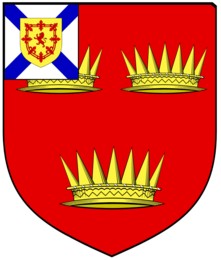 W
WThis article lists baronetcies, whether extant, extinct, dormant (D), unproven (U), under review (R) or forfeit, in the baronetages of England, Nova Scotia, Great Britain, Ireland and the United Kingdom.
 W
WCanadian peers and baronets exist in both the peerage of France recognized by the Monarch of Canada and the peerage of the United Kingdom.
 W
WThe Peerage of France was a hereditary distinction within the French nobility which appeared in 1180 in the Middle Ages, and only a small number of noble individuals were peers. It was abolished in 1789 during the French Revolution, but it reappeared in 1814 at the time of the Bourbon Restoration which followed the fall of the First French Empire, when the Chamber of Peers was given a constitutional function somewhat along British lines, which lasted until the Revolution of 1848. On 10 October 1831, by a vote of 324 against 26 of the Chamber of Deputies, hereditary peerages were abolished, but peerages for the life of the holder continued to exist until the chamber and rank were definitively abolished in 1848.
 W
WThe peerage of France consists of the great officers, direct vassals of the Crown of France, with the title peer of France. They represent the primitive constituents of elective monarchy, before the succession became hereditary in the House of Capet.
 W
WFor an explanation of the French peerage, see the article Peerage of France. Note that peerages and titles were distinct, and the date given for the extinction of the peerage is not necessarily the same as that of the extinction of the title. For more on noble titles and distinctions, see French nobility.
 W
WThis is a list of the 168 present and extant barons in the peerage of the Kingdom of Spain.
 W
WThis is a list of baronetcies in the Baronetage of Nova Scotia. These were first created in 1624, and were replaced by the Baronetage of Great Britain in 1707.
 W
WThis is a list of the 154 present and extant royal and non-royal dukes in the peerage of the Kingdom of Spain.